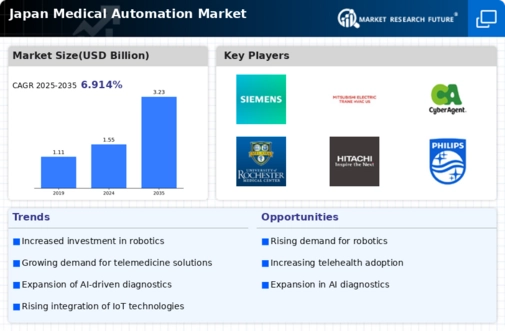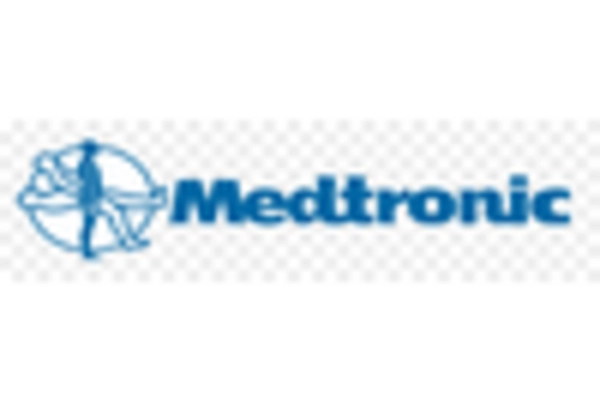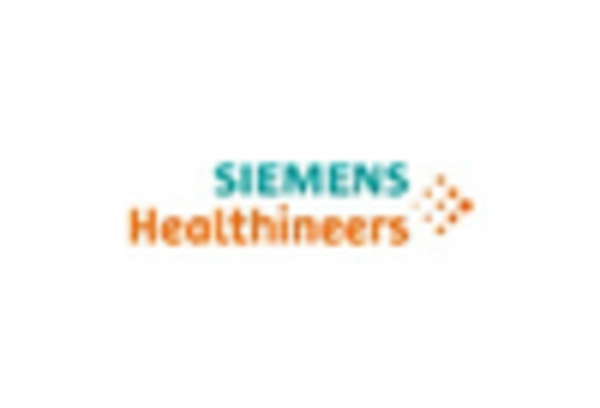The medical automation market in Japan is characterized by a dynamic competitive landscape, driven by technological advancements and an increasing demand for efficiency in healthcare delivery. Key players such as Medtronic (US), Siemens Healthineers (DE), and Philips (NL) are at the forefront, each adopting distinct strategies to enhance their market presence. Medtronic (US) focuses on innovation through the development of advanced robotic surgical systems, while Siemens Healthineers (DE) emphasizes digital transformation, integrating AI into imaging solutions. Philips (NL) is strategically positioned towards patient-centric care, leveraging data analytics to improve health outcomes. Collectively, these strategies foster a competitive environment that prioritizes technological innovation and operational efficiency.
In terms of business tactics, companies are increasingly localizing manufacturing to reduce costs and enhance supply chain resilience. The market structure appears moderately fragmented, with several players vying for market share. However, the influence of major companies is substantial, as they set benchmarks for quality and innovation. This competitive structure encourages smaller firms to innovate rapidly, thereby contributing to a vibrant ecosystem.
In October 2025, Medtronic (US) announced the launch of its latest robotic-assisted surgical platform, which integrates AI capabilities to enhance precision in minimally invasive procedures. This strategic move is likely to solidify Medtronic's position as a leader in surgical automation, responding to the growing demand for advanced surgical solutions in Japan. The introduction of this platform not only showcases Medtronic's commitment to innovation but also reflects a broader trend towards automation in surgical practices.
In September 2025, Siemens Healthineers (DE) unveiled a new AI-driven imaging system designed to streamline diagnostic processes in hospitals. This development is significant as it aligns with the increasing emphasis on digital health solutions, potentially improving patient outcomes and operational efficiency. By enhancing diagnostic accuracy, Siemens Healthineers is likely to strengthen its competitive edge in the medical automation market.
In August 2025, Philips (NL) entered a strategic partnership with a leading Japanese healthcare provider to co-develop integrated health solutions that leverage data analytics. This collaboration is indicative of a growing trend towards partnerships that enhance technological capabilities and expand market reach. By aligning with local healthcare providers, Philips is positioned to better understand and meet the specific needs of the Japanese market, thereby enhancing its competitive stance.
As of November 2025, the competitive trends in the medical automation market are increasingly defined by digitalization, sustainability, and the integration of AI technologies. Strategic alliances are becoming pivotal, as companies seek to leverage complementary strengths to drive innovation. The competitive landscape is shifting from traditional price-based competition towards a focus on technological advancement, reliability in supply chains, and the ability to deliver superior patient outcomes. This evolution suggests that future differentiation will hinge on the capacity to innovate and adapt to the rapidly changing healthcare environment.

















Leave a Comment